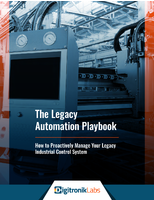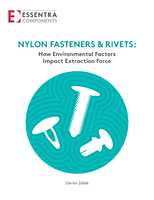ASHRAE, IES Seek Public Input on residential energy standard.
Press Release Summary:
Last year, ASHRAE and IES collaborated to increase efficiency of requirements in ANSI/ASHRAE/IES (Illuminating Engineering Society of North America) Standard 90.2, Energy Efficient Design of Low-Rise Residential Buildings. Now, both organizations are seeking input into draft of said standard. It is open for advisory public review May 13 until June 12, 2011. The goal of ASHRAE and IES is to publish standard that is 30% more energy efficient than 2004 version of 90.1.
Original Press Release:
ASHRAE, IES Seek Public Input on Residential Energy Standard
ATLANTA - Ensuring the welcome mat is always out for energy efficient homes is the goal of a standard being revitalized by ASHRAE and IES.
ANSI/ASHRAE/IES (Illuminating Engineering Society of North America) Standard 90.2, Energy Efficient Design of Low-Rise Residential Buildings, provides minimum requirements for the energy-efficient design of residential buildings. ASHRAE and IES joined forces last year to increase the efficiency of the standard's requirements.
Now the two organizations are seeking input into a draft of the standard. The standard is open for an advisory public review May 13 until June 12, 2011. Visit ashrae.org/publicreviews for more information.
Making homes more energy efficient is important given that the residential market contains 115 million housing units that consume 22.5 percent of the primary energy in the U.S. In addition, lighting consumes approximately 650 billion kWh per year, or approximately 10 percent of residential electricity consumption.
The goal of ASHRAE and IES is to publish a standard that is 30 percent more energy efficient than the 2004 version of 90.1 - including both a prescriptive and a performance path - and as the International Energy Conservation Code (IECC) 2006, as well as at least equivalent in energy efficiency to the 2009 IECC. As part of that effort, the two organizations are committed to developing a standard that is easy to use, has criteria that are economically justified and requirements that are not too strenuous to meet.
The proposed standard contains four prescriptive paths (R-values) and performance paths (U-factors) for each of the eight climate zones. The multiple paths provide options to:
"Without question, the most significant feature is the four prescriptive paths and that each path provides a 30 percent energy savings," Merle McBride, 90.2 committee chair, said. "This is the first time the standard has contained multiple prescriptive options, and the features in each path represent upgrades from previous versions. The combinations of the features in each path provide prescriptive options that users can select based on the type of construction and features that best meets their needs. One of the key attributes is the integration of multiple measures including envelope features, improved HVAC equipment efficiencies, lighting and reduced air leakage in the envelope and air distribution systems."
"In addition, the annual energy cost tradeoff option is retained, which allows users to conduct whole house simulations that can be used to trade off energy efficiency measures for any feature of the residence, including envelope, lighting, HVAC and service water heating," he said.
The title, purpose and scope of the draft standard were expanded to include new features such as criteria for lighting, pools and spas. In addition, the format, structure and organization of the standard were changed to make it easier to understand and simpler to use.
The 90.2 committee is specifically seeking suggestions for input into Appendix B, which eventually will include checklists for practitioners on installation and proper application of requirements, as well as what type of application checklists should be included.
Note: Under the advisory public review process, ASHRAE seeks suggestions for new, unusual or potentially controversial elements of a proposed standard that the committee feels would benefit from increased public scrutiny. Unlike ASHRAE's formal call for public comments process, comments received under advisory public reviews are supportive and do not need to be resolved.




